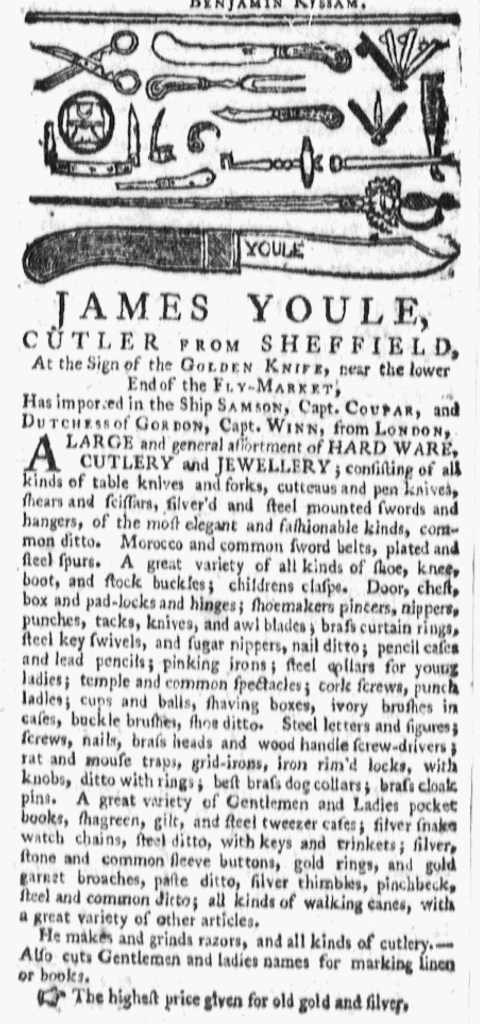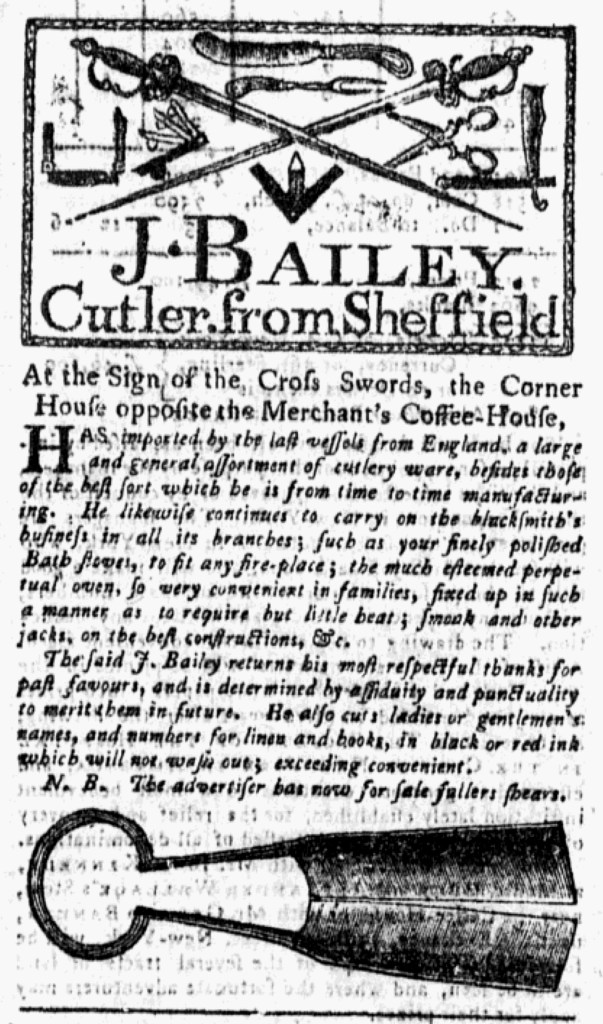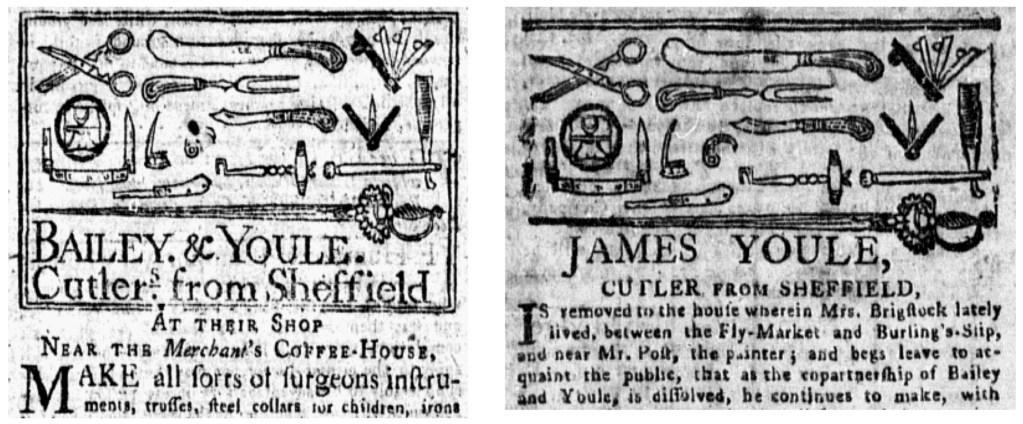What was advertised in a colonial American newspaper 250 years ago today?

“JAMES YOULE, CUTLER FROM SHEFFIELD, At the Sign of the GOLDEN KNIFE.”
James Youle, a “CUTLER FROM SHEFFIELD,” ran a shop “At the Sign of the GOLDEN KNIFE” in New York in the 1770s. He advertised a “LARGE and general assortment of HARDWARE, CUTLERY and JEWELLERY” in the January 20, 1774, edition of Rivington’s New-York Gazetteer. In addition to the dozens of items he listed in that notice, Youle declared that he “makes and grinds razors, and all kinds of cutlery.” Even given the length of Youle’s advertisement, many readers likely considered the woodcut that adorned it the most significant feature. It depicted more than a dozen items that the cutler made or sold at his shop, including shears, a fork, a table knife, a pocketknife, and a sword. The image rivaled the decorative borders that enclosed other advertisements in the same issue.
Youle had some experience incorporating similar woodcuts into his advertisements. Nearly three years earlier, the partnership of Bailey and Youle included a similar image in their advertisements in the New-York Gazette and Weekly Mercury in March 1771. In the summer of 1772, Youle updated the image to feature his name alone. The partnership having dissolved, Bailey ran advertisements for his own shop “At the Sign of the Cross Swords.” The woodcut that accompanied his advertisement showed several items arrayed around two crossed swords. In the early 1770s, other cutlers in New York, including Richard Sause and Lucas and Shephard, devised similar images for their advertisements, apparently deciding that remaining competitive in their trade required visual images in their notices as well as skill in their shops.
When he returned to pairing advertising copy with a woodcut in 1774, Youle revived the image that he first used when partnered with Bailey and later on his own, though he made one significant alteration. The cutler added a large knife, perhaps a machete, below the sword. The blade bore the name “YOULE,” just as Richard Sause previously included his last name on the blades of both a knife and a sword in his woodcut. Perhaps this new addition was the “GOLDEN KNIFE” from Youle’s sign, a new means of identifying his shop since his earlier advertisements with woodcuts. The cutler may have crafted the woodcut himself. Near the end of his advertisement, he noted that he “cuts Gentlemen and ladies names for marking linen or books. He may have applied the same skill to enhancing his own newspaper advertisements.


